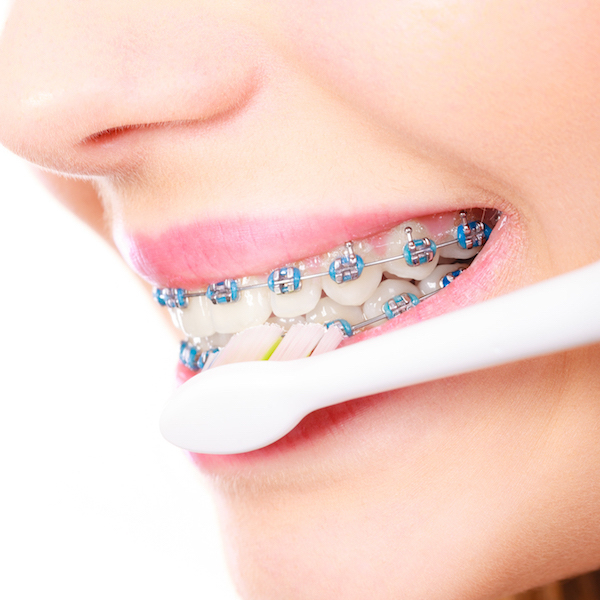Having a clean mouth is important. It gives you fresh breath and a nicer-looking smile. Brushing and flossing removes a thin sticky film of bacteria that grows on your teeth. This sticky film, called plaque, is the main cause of tooth decay and gum disease.
Brushing
While you’re in braces, food becomes caught in the brackets and between your teeth. Brushing after meals and flossing will help prevent plaque from forming and should become part of your daily schedule. Use a soft toothbrush and brush at a 45-degree angle to the tooth in small circles above and below the brackets. Be sure to replace your toothbrush when the bristles fray, and continue to see your dentist at least every 6 months for regular dental cleanings.
Flossing
Flossing with braces takes a few minutes to master, but the effort is well worth it. The first step to flossing is getting the floss under the wire that connects the braces together. A floss threader will help you get the dental floss underneath your archwires (floss picks special for braces are made by Plackers, Platypus, and Dentek). You may also feel that a Waterpik is helpful in getting food particles out from beneath the wire. Once the floss is under the archwire, push up toward the gum line and then pull down toward the wire (3-5 times). Be careful not to put too much pressure on the wire as you pull down. Then place the floss around the neighboring tooth and repeat the process until you’ve flossed all your teeth.
For your FREE consult call 914-245-6506
The Tooth Mover • Adult & Child Orthodontics






